
Rediscovering Japan

Rediscovering Japan
Seasonal Events (November)

by tomizuta
Shichigosan
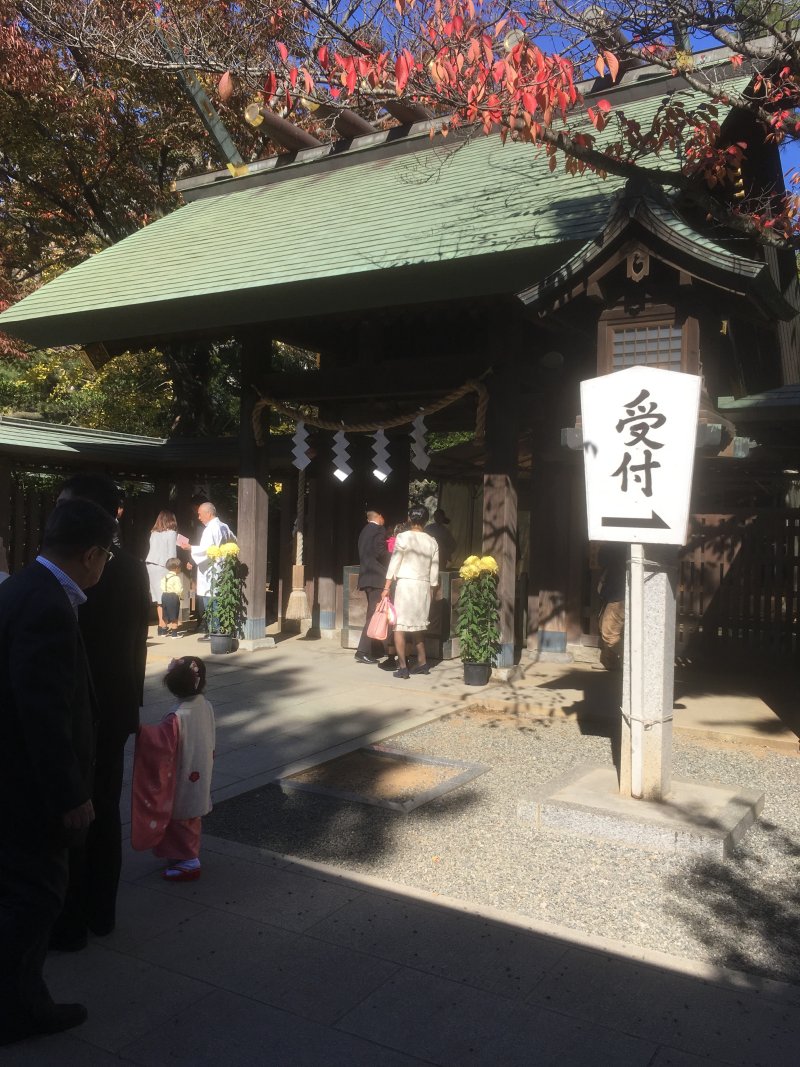 Shichchigosan means seven, five and three. It is a Shinto ritual to wish
the wellbeing of children at Shinto shrines. Three and seven are for girls
and five for boys. It is customarily held on November 15th, but nowadays
held on weekends around this date for convenience. On this day parents
dress their child up, take photos and go to the shrine. Many Shinto shrines
perform rituals for those that wish for a Shinto priest to offer prayers
to the Gods. It is understood that the custom started in the Edo era in
the Kantou region but gradual became a nationwide event.
Shichchigosan means seven, five and three. It is a Shinto ritual to wish
the wellbeing of children at Shinto shrines. Three and seven are for girls
and five for boys. It is customarily held on November 15th, but nowadays
held on weekends around this date for convenience. On this day parents
dress their child up, take photos and go to the shrine. Many Shinto shrines
perform rituals for those that wish for a Shinto priest to offer prayers
to the Gods. It is understood that the custom started in the Edo era in
the Kantou region but gradual became a nationwide event.
(Left: In front of the main shrine of Funabashi Daijinguu. A mother and
son wait for their turn to enter the main shrine for a ritual. Another
couple offers their prayer at the praying area in front of the main shrine.)
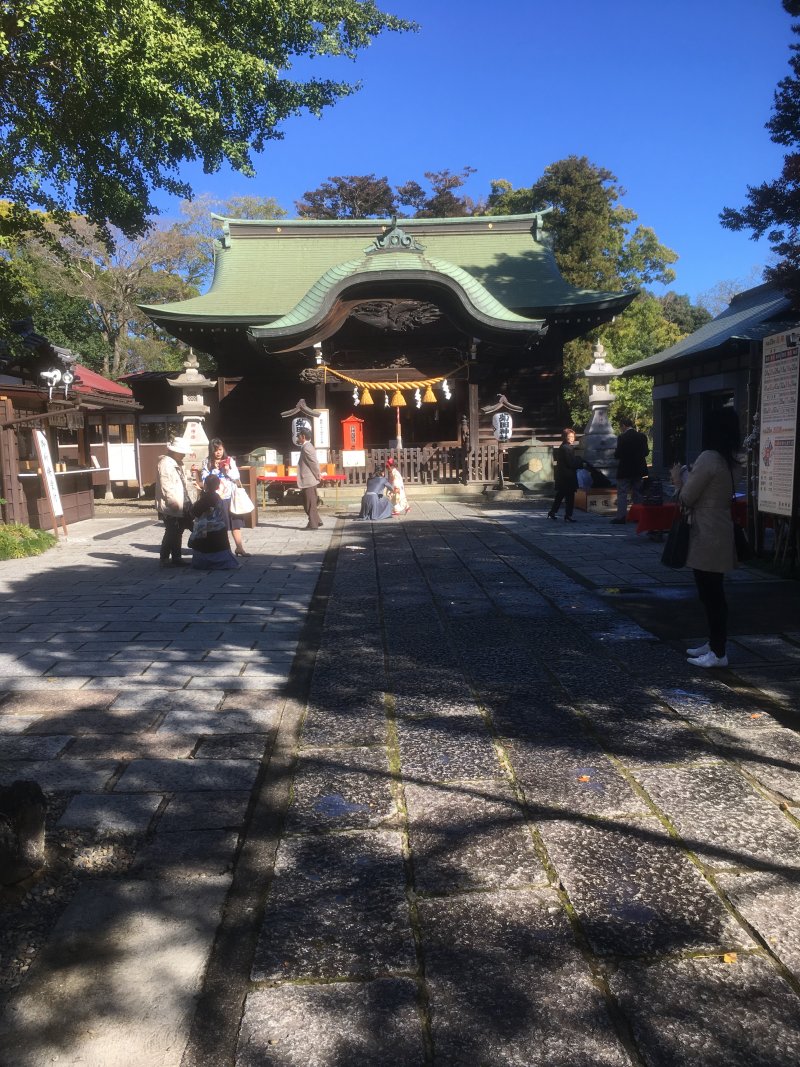 I went to Kikuta Jinja (Shinto shrine) in Narashino City, Chiba Prefecture,
which is a fifteen minutesf walk from JR Tsudanuma Station on the Soubu
Line. It is an old shrine that dates back to the Heian era. The site must
have been an island before modern land reclamation took place. It is a
quiet place with an amazingly large shrine grounds in the middle of high
rise apartments. Prayers could be heard from the main shrine so prayers
must have been offered inside. Outside the main shrine were some families
that wished to offer prayers only.
I went to Kikuta Jinja (Shinto shrine) in Narashino City, Chiba Prefecture,
which is a fifteen minutesf walk from JR Tsudanuma Station on the Soubu
Line. It is an old shrine that dates back to the Heian era. The site must
have been an island before modern land reclamation took place. It is a
quiet place with an amazingly large shrine grounds in the middle of high
rise apartments. Prayers could be heard from the main shrine so prayers
must have been offered inside. Outside the main shrine were some families
that wished to offer prayers only.
( Left: Families strolling and taking photos in front of the main shrine
of Kikuta Jinja.)
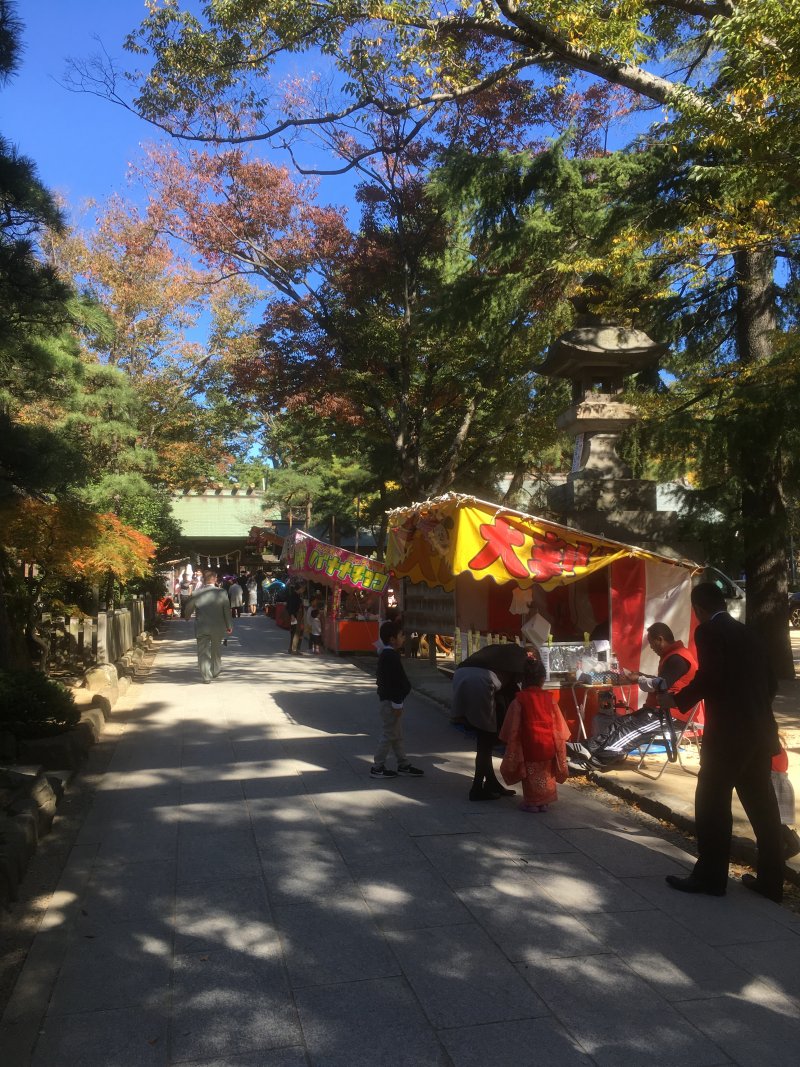 I next visited a larger shrine, Funabashi Daijinguu in Funabashi City.
I noticed a traffic warden on the road outside the car park, and some cars
were being guided in. As I entered from the car park, I found that there
were far more families with children than I had expected. There were even
a couple of stalls offering sweets to the children on the approach to the
main shrine.
I next visited a larger shrine, Funabashi Daijinguu in Funabashi City.
I noticed a traffic warden on the road outside the car park, and some cars
were being guided in. As I entered from the car park, I found that there
were far more families with children than I had expected. There were even
a couple of stalls offering sweets to the children on the approach to the
main shrine.
(Left: The approach to the main shrine of Funabashi Daijinguu. Although
not as many as on the New Year's Holiday, there were some stalls selling
sweets and toys.)
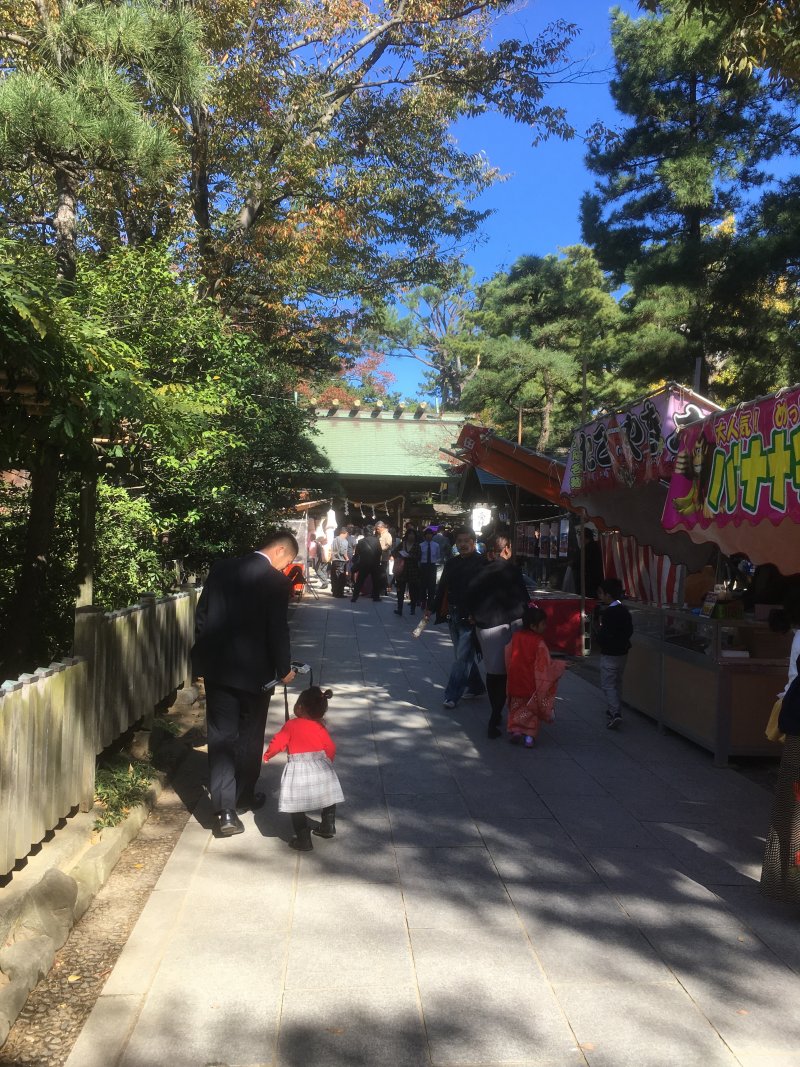 The queue in front of the shrine waiting for their turn to offer their prayers was quite long. It was a new find for me that with fewer children in the family nowadays Shichigosan certainly seems to have become celebrated much more grandly.
The queue in front of the shrine waiting for their turn to offer their prayers was quite long. It was a new find for me that with fewer children in the family nowadays Shichigosan certainly seems to have become celebrated much more grandly.
(Left: Nearing the end of the queue to offer prayers at the praying place
in front of the main shrine.)
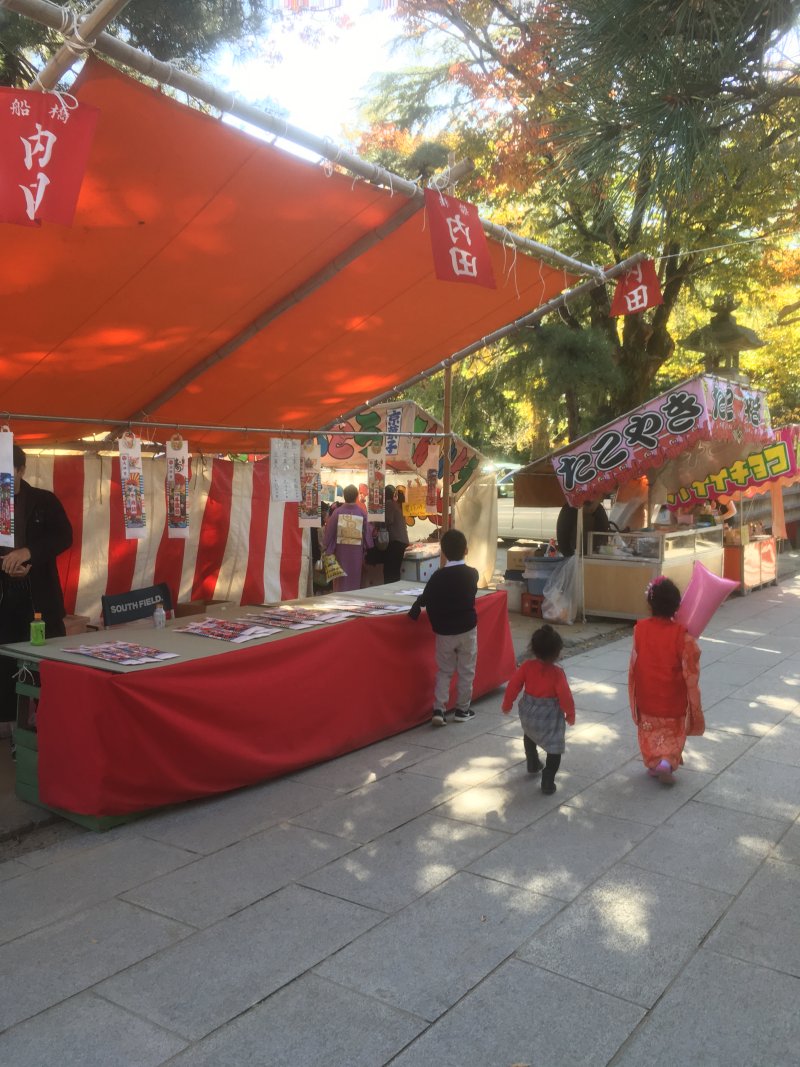 This monthfs wagashi I introduce is Chitoseame. Chitose means a thousand
years and ame means candy. It is a custom to provide this candy to children
on Shichigosan Day.
This monthfs wagashi I introduce is Chitoseame. Chitose means a thousand
years and ame means candy. It is a custom to provide this candy to children
on Shichigosan Day.
(Left: A stall selling Chitoseame. Please take a good look at the candies
in a special bag hanging as well as on the stall.)